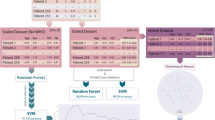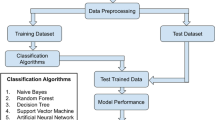Abstract
The objective for global elimination of human lymphatic filariasis is by 2020. Public health department major problem is to predict the severity of the lymphatic filariasis disease grade levels and its control measures in patients. The grades are classified as Grade-I, Grade-II, Grade-III and Grade-IV which are categorized based on their symptom of the disease in the patients. The study is based on the attributes of lymphatic filariasis grades. In this research paper data mining techniques such as K-means Classification algorithms and Bayesian prediction are used to categorize the grade levels of lymphatic filariasis and to predict the curable rate of the lymphatic filariasis control measures. The control measures of the existing affected patients are to be considered to increase the curable rate in the future, with the help of Bayesian prediction mechanism. With regard to these findings and emphasis on prediction of severity of the lymphatic filariasis disease incidence to reduce complications, disabilities and healthcare costs, this study was aimed to investigate lymphoedema stages and grades for lymphatic filariasis. Therefore accurate prediction of severity of lymphatic filariasis at different period of time in patient is important for good clinical decision making and morbidity management in public health strategies.







Similar content being viewed by others
References
Buckley, J.J., Edeson.: Manson's Tropical Diseases. Ann. Trop. Med. Parasitol. 54, 75–77 (1956)
Burri, H., Loutan, L., Kumaraswami, V., Vijayasekaran, V.: Skin changes inchronic lymphatic filariasis. Trans. R. Soc. Trop. Med. Hyg. 90, 671–674 (1996)
Cilento, R.W.: Tropical diseases in Australia, 2nd edn. Smith and Petterson, Brisbane (1942)
Cobbold, T.S.: Discovery of the adult representative of microscopic filariae. Lancet ii, 70–71 (1877)
Demarquay, J.N.: Manson's Tropical Diseases. Gaz. Med. Paris 18, 665–667 (1863)
Dreyer, G., et al.: Renal abnormalities in microfilaraemic patients with bancroftian filariasis. Ann. J. Trop. Med. Hyg. 46, 745–751 (1922)
Hawking, F., Denham, D.A.: The distribution of human filariasis throughout the world. Part I. The pacific region including New Guinea. Trop. Dis. Bull. 73, 347–373 (1976)
Jamal, S., et al.: The effect of 5,6 benzo-[a]-pyrone(coumarin) and DEC on filaritic lymphoedema and elephantiasis in India. Ann. Trop. Med. Parasitol. 83, 287–290 (1989)
Kumaraswami, V.: The clinical manifestations of lymphatic filariasis. In: Nutman, T.B. (ed.) Lymphatic filariasis, pp. 103–125. Imperial College Press, London (2000)
National Filaria Control Programme: Lymphatic filariasis (1955)
National Vector Borne Disease control Programme: Lymphatic filariasis (2003)
Partono, F., Purmono, A., Dennis, D.T., Atmosoedjono, S., Oemijati, S., Cross, J.H.: Brugia timori from Flores Island. Indinesia 63, 540–546 (1977)
Rom, W.N., et al.: Persistent lower respiratory tract inflammation associated with interstitial lung disease in patients with pulmonary eosinophilia following conventional treatment with diethylcarbamazine. Am. Rev. Respir. Dis. 142, 1088–1092 (1991)
Romiti, C.: The primary aspect of the disease syndrome of bancroftian filariasis in British Guiana. West Indian Med. J. 5, 113–119 (1956)
WHO: Lymphatic filariasis: the disease and its control. Fifth report of the WHO Expert Committee on Filariasis. WHO Tech. Rep. Ser. 1992, 821 (1992)
Wijers, D.J.B., McMahon, J.E.: Early signs and symptoms of bancroftian filarisis in males at the East African Coast. East Afr. Med. J. 53, 57–63 (1976)
Wucherer, O.E.: Manson's Tropical Diseases. Gaz. Med. Paris. 3, 97–99 (1863)
Saravanan, M., Aramudhan, M., Sundara Pandiyan, S., Avudaiappan, T.: Priority based prediction mechanism for ranking providers in federated cloud architecture. Clust. Comput. (2018). https://doi.org/10.1007/s10586-017-1593-x
Author information
Authors and Affiliations
Corresponding author
Rights and permissions
About this article
Cite this article
Rajagopal, R.D., Murugan, S., Kottursamy, K. et al. Cluster based effective prediction approach for improving the curable rate of lymphatic filariasis affected patients. Cluster Comput 22 (Suppl 1), 197–205 (2019). https://doi.org/10.1007/s10586-018-2282-0
Received:
Revised:
Accepted:
Published:
Issue Date:
DOI: https://doi.org/10.1007/s10586-018-2282-0




